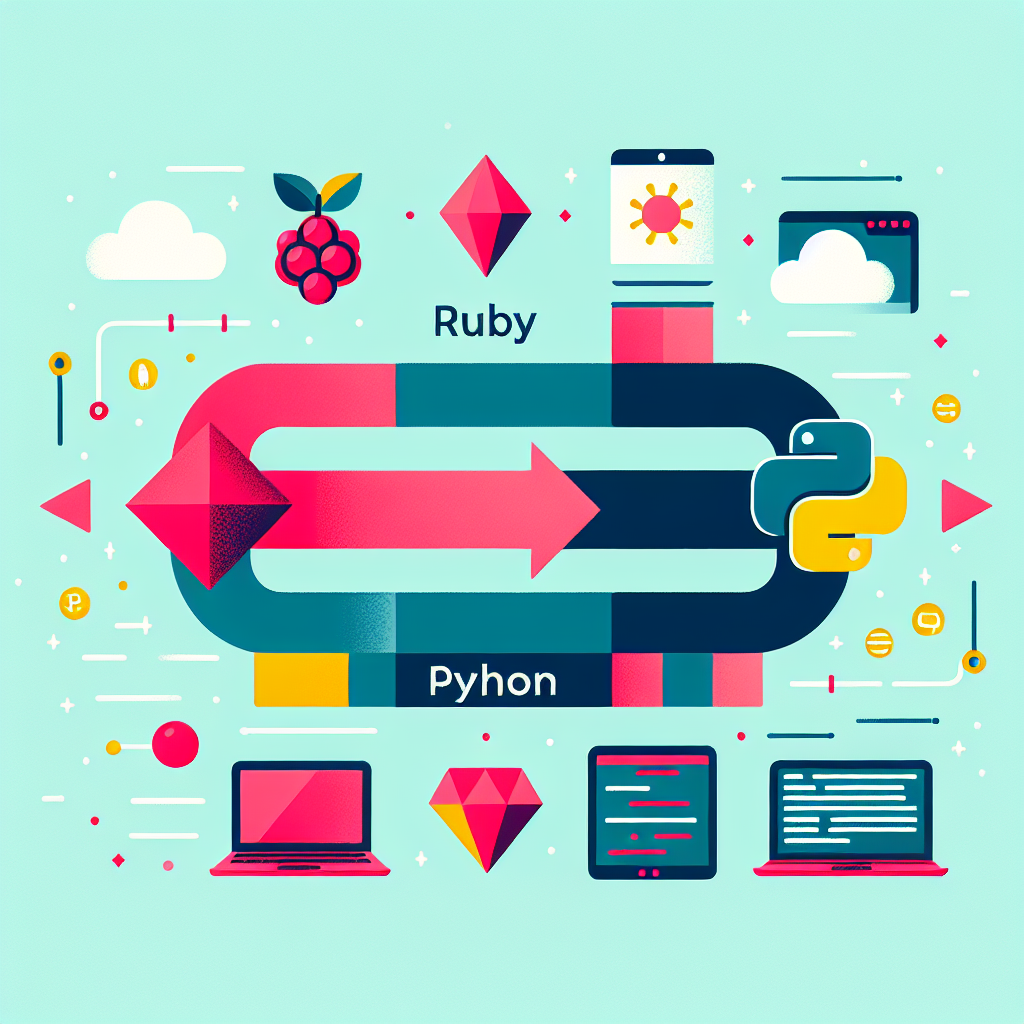Convert Ruby to Python Effortlessly | Free Online Tool
Easily convert Ruby code to Python with our powerful tool. Enhance your coding projects with seamless Ruby to Python translation. Try it now for free!
Source Code
Converted Code
Output will appear here...
The Ruby to Python Converter tool seamlessly translates your Ruby code into Python, enhancing cross-language compatibility and streamlining your development workflow. Perfect for developers looking to leverage Pythons extensive libraries and community support, this tool ensures accurate syntax conversion and efficient code transformation. Ideal for optimizing application performance and expanding project versatility, the converter is essential for agile development teams and software engineers.

Ruby to Python: Seamless Code Conversion Tool Link to this section #
Streamline your programming workflow with our Ruby to Python conversion tool, designed for developers transitioning from Ruby to Python. This tool efficiently translates Ruby scripts into Python, maintaining functionality and logic while adapting to Python's syntax.
Key Features Link to this section #
- Automated Conversion: Instantly convert Ruby code into Python, eliminating manual rewriting and reducing errors.
- Syntax Adaptation: Translates Ruby-specific constructs, such as blocks and iterators, into Python equivalents.
- Code Optimization: Ensures the converted code follows Pythonic conventions for readability and performance.
Why Convert Ruby to Python? Link to this section #
- Wider Application: Python's versatility in data science, machine learning, and web development makes it a preferred choice.
- Community Support: Python's large community offers abundant resources and libraries.
- Performance: Python's extensive standard library and third-party modules enhance execution efficiency.
Example Conversion Link to this section #
Here's a simple example demonstrating how Ruby code is translated into Python:
Ruby Code:
def greet(name)
puts "Hello, #{name}!"
end
greet('World')
Converted Python Code:
def greet(name):
print(f"Hello, {name}!")
greet('World')
Additional Resources Link to this section #
Benefits of Using the Tool Link to this section #
- Time-Saving: Reduces the time required for manual conversion.
- Accuracy: Minimizes human errors during code translation.
- Learning Aid: Helps Ruby developers learn Python through direct code comparisons.
Leverage our Ruby to Python tool for a smooth transition and unlock the full potential of Python's capabilities in your projects.
Frequently Asked Questions
What are the main differences between Ruby and Python?
The main differences between Ruby and Python lie in their syntax, philosophy, and community focus. Ruby emphasizes flexibility and the principle of 'There's More Than One Way To Do It', often used in web development with Rails. Python, on the other hand, emphasizes readability and simplicity, following the 'There Should Be One—and preferably only one—obvious way to do it' philosophy, and is widely used in scientific computing, data analysis, and machine learning.
Is it difficult to switch from Ruby to Python?
Switching from Ruby to Python is generally considered approachable because both are high-level, dynamically-typed languages with similar constructs like loops, conditionals, and object-oriented programming. However, developers might need to adapt to Python's strict indentation rules and its extensive use in different fields like data science, which might require learning additional libraries.
Can I use Ruby and Python together in a project?
Yes, you can use Ruby and Python together in a project, although it might require some setup. For example, you can use Python for data processing tasks and Ruby on Rails for the web application part. Communication between Ruby and Python can be facilitated through APIs, or by using tools and libraries like PyCall that allow calling Python code from Ruby.